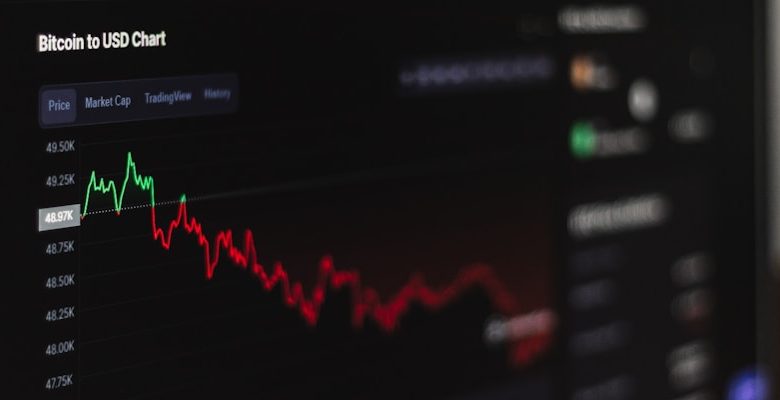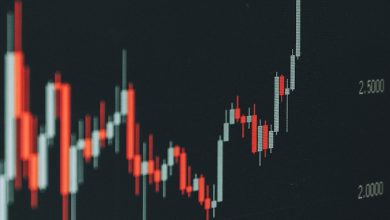Market Dynamics During Bull and Bear Cycles in Cryptocurrency

- Understanding Market Dynamics in Cryptocurrency
- The Impact of Bull Cycles on Cryptocurrency Markets
- Navigating Bear Cycles: Strategies for Cryptocurrency Investors
- Market Trends During Bull and Bear Cycles in Cryptocurrency
- Risk Management in Volatile Cryptocurrency Markets
- Comparing Market Behavior in Bull and Bear Cycles
Understanding Market Dynamics in Cryptocurrency
The cryptocurrency market is known for its volatile nature, with prices often experiencing significant fluctuations during both bull and bear cycles. Understanding market dynamics in cryptocurrency is crucial for investors to make informed decisions and navigate these cycles effectively.
During bull cycles, prices of cryptocurrencies tend to rise rapidly as demand outpaces supply. This can be driven by factors such as positive news, increased adoption, and speculation. As prices surge, investor sentiment tends to be optimistic, leading to a frenzy of buying activity. It is important for investors to exercise caution during bull cycles, as prices can reach unsustainable levels and a correction may be imminent.
Conversely, bear cycles are characterized by falling prices and negative sentiment in the market. Factors such as regulatory crackdowns, security breaches, and economic uncertainty can trigger a bear cycle. During this period, investors may panic sell, leading to further price declines. It is essential for investors to remain level-headed during bear cycles and look for opportunities to buy assets at discounted prices.
Market dynamics in cryptocurrency are also influenced by external factors such as global economic conditions, regulatory developments, and technological advancements. It is important for investors to stay informed about these factors and how they may impact the market. By keeping a close eye on market dynamics and trends, investors can make more informed decisions and mitigate risks associated with volatility in the cryptocurrency market.
The Impact of Bull Cycles on Cryptocurrency Markets
During bull cycles in the cryptocurrency markets, there is a noticeable increase in investor optimism and buying activity. This surge in positive sentiment often leads to a significant uptick in prices across various digital assets. As a result, more retail and institutional investors become interested in participating in the market, further driving up demand. The increased attention and inflow of capital during bull cycles can create a self-reinforcing loop where rising prices attract more buyers, pushing prices even higher.
One of the key impacts of bull cycles on cryptocurrency markets is the creation of a positive feedback loop that can amplify price movements. This feedback loop is driven by a combination of factors, including investor sentiment, market dynamics, and external events such as regulatory developments or technological advancements. As prices continue to rise during bull cycles, more investors may FOMO (fear of missing out) into the market, further fueling the upward momentum.
Additionally, bull cycles can also lead to increased media coverage and public attention on cryptocurrencies, which can attract more interest from mainstream investors and the general public. This heightened visibility can contribute to the overall positive sentiment in the market and help sustain the upward trend in prices. However, it is important to note that bull cycles are not sustainable in the long term, and they are often followed by periods of consolidation or correction.
In conclusion, bull cycles have a significant impact on cryptocurrency markets by driving up prices, increasing investor optimism, and attracting more participants to the market. While these cycles can create opportunities for investors to profit from the upward momentum, it is essential to exercise caution and manage risks effectively, as market conditions can change rapidly during bull cycles. By understanding the dynamics of bull cycles and their effects on cryptocurrency markets, investors can make more informed decisions and navigate the market more effectively.
Navigating Bear Cycles: Strategies for Cryptocurrency Investors
During bear cycles in the cryptocurrency market, it is crucial for investors to navigate wisely in order to minimize losses and even potentially profit. Here are some strategies to consider:
1. **Diversification**: One of the key strategies during bear cycles is to diversify your cryptocurrency portfolio. By spreading your investments across different coins, you can reduce the risk of being heavily impacted by the poor performance of a single asset.
2. **Holding vs. Trading**: While it may be tempting to panic-sell during a bear cycle, it is important to consider whether holding onto your investments might be a better long-term strategy. Trying to time the market by trading frequently can often lead to missing out on potential gains when the market eventually recovers.
3. **Research and Due Diligence**: During bear cycles, it is more important than ever to conduct thorough research and due diligence before making any investment decisions. Look into the fundamentals of the projects you are interested in, as well as the team behind them, to ensure you are making informed choices.
4. **Cost-Averaging**: Cost-averaging is a strategy where you invest a fixed amount of money at regular intervals, regardless of the price of the asset. This can help reduce the impact of market volatility on your investments and potentially lower your average cost per coin.
5. **Risk Management**: Bear cycles can be unpredictable, so it is essential to have a risk management strategy in place. Consider setting stop-loss orders to limit your losses, and only invest money that you can afford to lose.
By implementing these strategies and staying informed about market trends, cryptocurrency investors can navigate bear cycles more effectively and potentially come out stronger when the market eventually shifts back into a bull cycle.
Market Trends During Bull and Bear Cycles in Cryptocurrency
During bull cycles in the cryptocurrency market, prices tend to rise steadily, driven by increasing demand from investors looking to capitalize on potential profits. This upward trend often leads to a surge in trading volume as more people enter the market, hoping to benefit from the positive momentum. As prices continue to climb, FOMO (fear of missing out) can set in, causing even more investors to jump on the bandwagon, further fueling the bullish sentiment.
Conversely, during bear cycles, prices tend to decline as selling pressure outweighs buying interest. This downward trend can be triggered by various factors such as regulatory crackdowns, security breaches, or overall market sentiment turning negative. As prices fall, investors may panic and start selling their holdings to cut their losses, leading to a further decline in prices. During bear cycles, trading volume usually decreases as investors become more cautious and hesitant to enter the market.
In summary, market trends during bull and bear cycles in cryptocurrency are characterized by either a bullish or bearish sentiment, driving prices in one direction or the other. Understanding these market dynamics can help investors make informed decisions and navigate the volatile nature of the cryptocurrency market more effectively.
Risk Management in Volatile Cryptocurrency Markets
In the volatile world of cryptocurrency markets, risk management is crucial for investors looking to navigate the ups and downs of bull and bear cycles. These market dynamics can lead to significant swings in prices, making it essential for traders to have a sound strategy in place to protect their investments.
One key aspect of risk management in cryptocurrency markets is diversification. By spreading out investments across a range of different assets, investors can mitigate the impact of price fluctuations in any one particular cryptocurrency. This can help to reduce overall risk exposure and provide a more stable return on investment.
Another important strategy for managing risk in cryptocurrency markets is setting stop-loss orders. These orders automatically trigger a sale when a cryptocurrency reaches a certain price, helping to limit potential losses in the event of a sudden price drop. By using stop-loss orders, investors can protect themselves from the worst effects of market volatility.
It is also essential for investors to stay informed about market trends and news that could impact cryptocurrency prices. By keeping a close eye on developments in the industry, investors can make more informed decisions about when to buy or sell their assets. This can help to minimize risk and maximize potential returns in a constantly changing market.
Overall, risk management is a critical component of success in volatile cryptocurrency markets. By diversifying investments, setting stop-loss orders, and staying informed about market trends, investors can protect themselves from the worst effects of market volatility and position themselves for long-term success in the world of cryptocurrency trading.
Comparing Market Behavior in Bull and Bear Cycles
During bull cycles in the cryptocurrency market, prices typically experience a sustained increase over a prolonged period. This is often accompanied by high levels of investor optimism and a flurry of buying activity. As prices continue to rise, more investors are drawn to the market, further driving up demand. The increased demand leads to higher prices, creating a positive feedback loop that fuels the bull cycle.
Conversely, bear cycles in the cryptocurrency market are characterized by sustained decreases in prices over an extended period. During these periods, investor sentiment tends to be negative, leading to increased selling pressure. As prices fall, more investors may panic and sell their holdings, exacerbating the downward trend. This creates a negative feedback loop that perpetuates the bear cycle.
When comparing market behavior in bull and bear cycles, it is important to note that they are two sides of the same coin. Bull cycles are marked by optimism, high demand, and rising prices, while bear cycles are characterized by pessimism, increased selling pressure, and falling prices. Both cycles are natural parts of the market’s ebb and flow, and understanding how they operate can help investors make more informed decisions.



